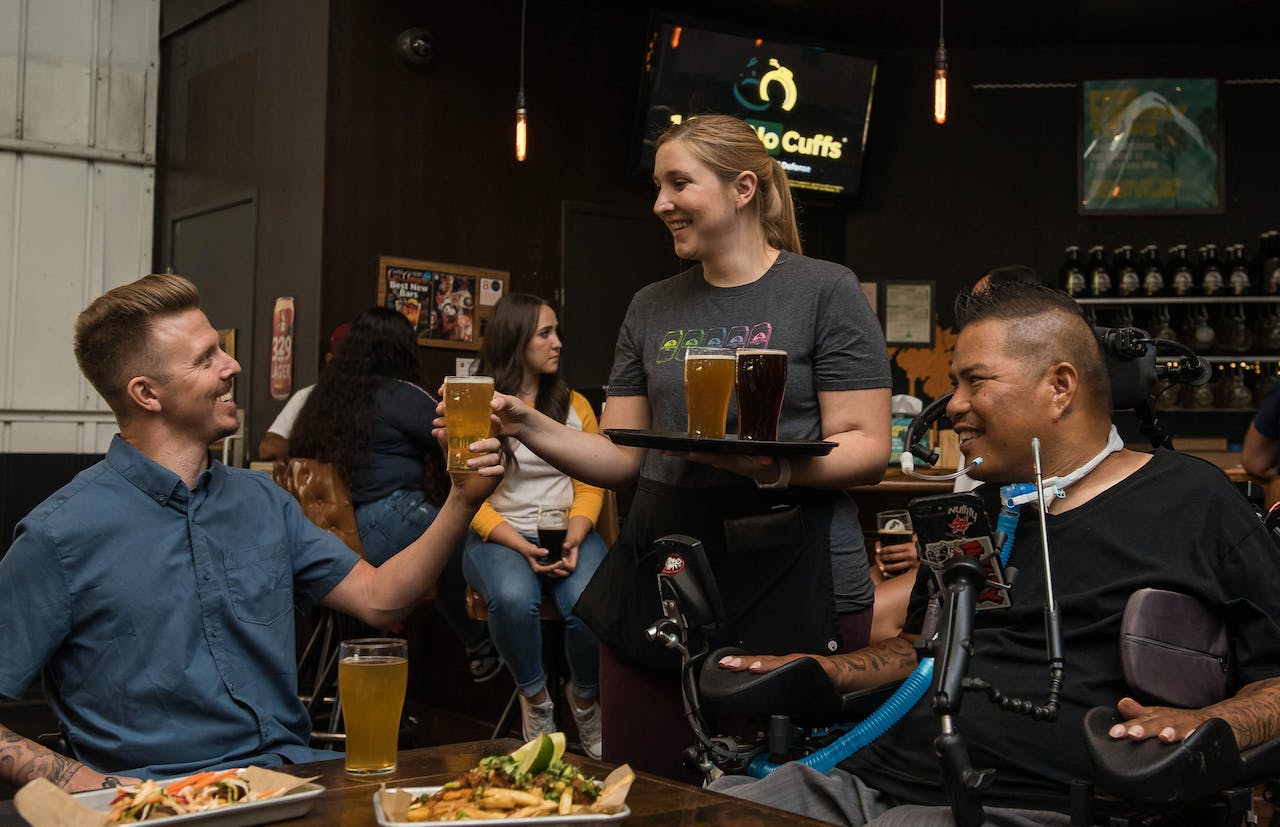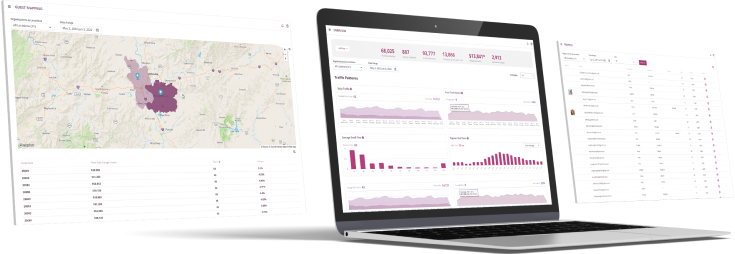Are you feeling the weight of today’s uncertain economy and the challenge of dwindling consumer spending in an industry that demands constant adaptation and resilience?
The restaurant industry is at a crossroads, facing both unprecedented challenges and opportunities. As guest expectations evolve, personalization and segmentation emerge as key differentiators in this competitive landscape.
The key is in understanding today’s consumers. Today’s restaurant market is experience-driven. Guests seek dining experiences that resonate personally with them, making it crucial for restaurants to understand and cater to these individual preferences.
Personalization is no longer a luxury but a necessity for success in this dynamic environment to keep guests happy and coming back.

Welcome to the forefront of the restaurant industry’s revolution, where the secret ingredient to thriving in an increasingly competitive market is no longer confined to the kitchen.
It’s in the data.
For restaurant owners and operators who are ready to elevate their game by embracing the power of data-driven strategies, we dive into the significance of personalization and segmentation, unraveling how these approaches, fueled by insightful data analysis, are not just trends but necessities in today’s dynamic dining landscape.
Get ready to explore the pivotal role of data in reshaping guest experiences, enhancing loyalty, powering restaurant marketing, and driving unprecedented growth even in uncertain times. Turn information into action and set your restaurant on a path to not just succeed but to thrive.
The Importance of Personalization and Segmentation
With the amount of competition in the restaurant industry, personalization and segmentation have emerged as crucial strategies for creating standout guest experiences and driving business growth.
Understanding and implementing these concepts can be the difference between a restaurant that merely operates and one that continues to grow.
Personalization: Crafting Unique Dining Experiences
Personalization in the restaurant context involves tailoring the dining experience to meet the specific preferences and expectations of individual guests.
It’s about recognizing and responding to the unique needs of each guest, making them feel valued and special. This could mean remembering a guest’s favorite dish, their favorite table, or greeting them by name upon arrival.
The benefits of personalization are many:
- It fosters a deeper emotional connection between the guest and the restaurant, leading to increased customer loyalty.
- Personalized experiences often translate into positive reviews and word-of-mouth recommendations, crucial in today’s digital age.
- It also opens avenues for upselling and cross-selling by aligning offerings more closely with guest preferences, thereby enhancing revenue.
Segmentation: Targeting the Right Audience
While personalization focuses on individual guests, customer segmentation involves dividing the broader guest base into smaller, more manageable groups based on shared characteristics.
These groups can be formed based on various criteria like dining preferences, frequency of visits, average spend, or demographic factors.
Effective segmentation allows restaurants to:
- Develop targeted marketing campaigns that resonate more deeply with each group, thereby increasing their effectiveness.
- Identify and nurture different customer segments, such as regulars, first-time visitors, or special occasion diners, with tailored strategies that encourage repeat visits.
- Allocate resources more efficiently, whether it’s staffing, inventory management, or marketing spend, based on the needs and behaviors of different segments.
Understanding and utilizing guest data can be daunting. However, with a customer data platform like Bloom Intelligence, this task transforms from a challenging endeavor into a streamlined, very manageable process.
Bloom specializes in simplifying the collection and analysis of guest data. It offers a user-friendly platform where data from various sources like POS systems, online ordering and reservations, and WiFi logins are seamlessly integrated.
This integration provides a 360-degree view of guest behaviors and preferences, crucial for informed decision-making.
Bloom makes the process of dividing your customer base into distinct groups based on shared characteristics simple and easy, making segmentation almost effortless.
This enables restaurant owners and marketers to quickly identify and target specific customer segments with personalized marketing strategies and tailored dining experiences.

Combining Personalization and Segmentation
When personalization and segmentation are combined, they create a powerful synergy.
Segmentation provides a framework for understanding the diverse needs of the guest base, while personalization allows for the execution of specific strategies that cater to these needs at an individual level.
This dual approach ensures that while the restaurant is effectively reaching out to different segments of its market, it is also creating individualized experiences that resonate on a personal level.
Personalization and segmentation in the restaurant industry are key to not only attracting guests but also to building lasting relationships with them. By effectively using data to understand and cater to guest preferences, restaurants can create unforgettable experiences that keep guests coming back for more.
The Power of Data in Personalization and Segmentation
The foundation of effective personalization and segmentation lies in data collection. Understanding guest behavior and preferences allows restaurants to tailor experiences and engage guests more effectively.
By collecting data from multiple sources and aggregating it into one platform, restaurants can create more individualized interactions.
Various methods of data collection play a key role in understanding guest behavior and preferences. WiFi and website analytics are instrumental in providing insights into how often guests visit, how long they stay, and their activities online. Similarly, online ordering and reservations systems are a goldmine of information, offering direct insights into guests’ preferences through their engagement and feedback on these platforms. Equally important are Point of Sale (POS) systems, which track transactional data, shedding light on guests’ ordering patterns and spending habits.
Moving beyond collection, the aggregation and integration of this data is where platforms like Bloom Intelligence shine. They excel in consolidating data from these varied sources into a unified view, a process that’s essential for effective personalization and segmentation.
This comprehensive view of guest data is invaluable, not only for creating targeted marketing strategies but also for enhancing the accuracy and reliability of the data, thereby ensuring more informed and effective decision-making.
With such integration, restaurants can craft more precise and impactful strategies, tailored to the nuanced needs of their guests.
- Data Collection Sources
- WiFi and Website Analytics: These tools provide insights into guest visit frequency, duration, and online/in-store behavior.
- Website Forms: A great way to collect guest feedback and contact information like emails and phone numbers.
- Point of Sale (POS) Systems: Transactional data from POS systems reveal what guests are ordering and their spending habits.
- Online Ordering and Reservation Systems: These systems offer insights into guest ordering patterns and dining preferences.
- Aggregating and Integrating Guest Data
- Aggregating guest data from these diverse sources into a unified view is crucial. Platforms like Bloom Intelligence excel in this, offering a single customer view that is invaluable for personalization and segmentation.
- This unified view facilitates effective audience creation, allowing for more targeted and efficient marketing strategies. It also enhances data accuracy and reliability, ensuring informed decision-making.
Benefits of Personalization and Segmentation
Personalizing guest experiences offers a range of benefits that are crucial for the success of any restaurant. By creating experiences that resonate personally with guests, restaurants can foster a deeper emotional connection, which often results in increased guest loyalty.
This loyalty not only leads to more frequent repeat visits but also encourages guests to become brand advocates through positive word-of-mouth promotion.
Moreover, personalization plays a significant role in enhancing a restaurant’s brand image. In a market crowded with options, a restaurant that can offer a unique, tailored experience stands out.
This distinct identity not only attracts new guests but also helps in building and maintaining a strong, positive reputation.
Additionally, personalization opens up opportunities for increased revenue through upselling and cross-selling. When recommendations are tailored to align with individual guest preferences, there’s a higher likelihood of guests trying new offerings or premium options.
This not only improves the overall dining experience for the guest but also increases the average spending per visit, contributing to the restaurant’s financial growth.
In summary, personalizing guest experiences is not just about meeting expectations but exceeding them, leading to a cycle of loyalty, restaurant reputation enhancement, and revenue growth.
The restaurant industry is evolving rapidly, and those who fail to adapt risk being left behind. Embracing a data-driven approach to guest experience is no longer optional but essential for success.
Restaurants must leverage the power of data to personalize experiences and segment their guest base effectively. Platforms like Bloom Intelligence offer the tools and insights necessary to navigate this transformation.
For restaurants ready to step into the future of dining, embracing the intelligent use of data to create exceptional, personalized guest experiences is the way forward.
The future is here, and it’s powered by data.

Discover Bloom Intelligence
Bloom Intelligence is an AI-powered restaurant marketing platform that includes a powerful customer data platform, automated guest data collection, marketing automation, and reputation management tools.
Guest data is collected from many different sources and aggregated into one single platform, making it simple and easy to analyze and segment your restaurant’s guest personas for your restaurant digital marketing and operations decisions.
Data is collected from sources like WiFi logins, online reservation systems, online ordering platforms, POS systems, website forms, social media and more.
Bloom makes guest data collection effortless, allowing you to quickly execute the strategies listed above, saving you time, increasing customer lifetime values, attracting new guests, improving your reputation, and boosting your bottom line.
Click Here to Schedule a Free Online Demo, or call 727-877-8181 to see how we can help you save time and drive tangible results for your restaurants.





.svg)